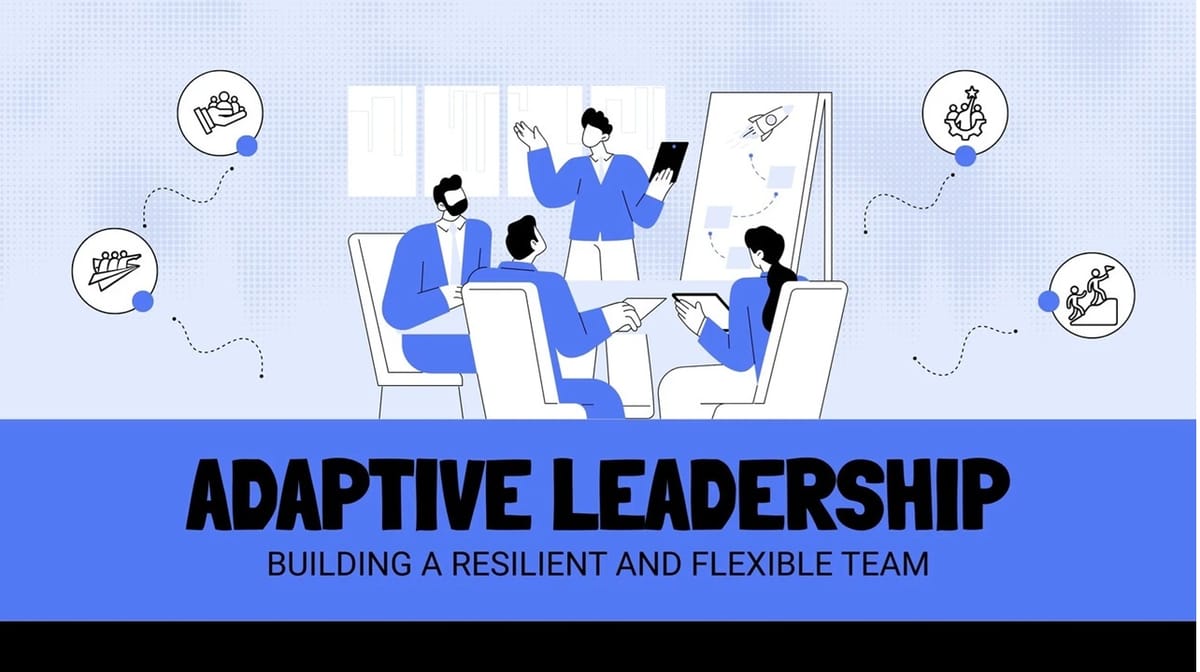Adaptive Leadership
Welcome to the frontier of Adaptive Leadership, the practice of leading in real-time, in complexity, and in the uncomfortable unknown.
Welcome to the frontier of Adaptive Leadership, the practice of leading in real-time, in complexity, and in the uncomfortable unknown.

In today’s chaotic, ever-shifting landscape, one thing is certain: leadership that clings to the past will not serve the future.
Welcome to the frontier of Adaptive Leadership, the practice of leading in real-time, in complexity, and in the uncomfortable unknown. First articulated by Ronald Heifetz, Alexander Grashow, and Marty Linsky, this approach doesn’t hand out tidy solutions. Instead, it calls us to something far more demanding, and far more rewarding.
Adaptive Leadership asks us to lead without the map.
It’s not about being the hero at the front of the room with all the answers. It’s about being the guide who helps others discover new ways forward, especially when the old answers no longer work. For those of us committed to advancing the practice of personal responsibility, this model isn’t just a theory, it’s a lived experience.
What Makes Leadership Adaptive?
At its core, Adaptive Leadership distinguishes between two types of challenges:
Here’s the truth: Most of the problems that matter today, in organizations, communities, and global systems, are adaptive. They live in the grey zone. And yet, many leaders are still applying technical solutions to problems that require transformation.
That’s where the breakdown begins. That’s also where Adaptive Leadership begins.
The Five Practices of Adaptive Leaders
1. Get on the Balcony
Leadership isn’t just about being in the action. It’s about stepping above the noise to see the patterns playing out. In Full Spectrum Leadership, we call this cultivating meta-awareness, the ability to zoom out, observe dynamics without being entangled in them, and make choices from a higher level of consciousness.
2. Distinguish the Challenge
Adaptive leaders know how to name the nature of a challenge accurately. Is this something that requires expertise, or something that demands a shift in mindset, values, or culture? Misdiagnosing adaptive work as technical is one of the most common, and costly, leadership errors.
3. Regulate the Heat
Adaptive change creates tension. And that’s not a bad thing, some heat is necessary for transformation. But too much, too fast? People shut down or push back. Too little? Complacency reigns. Leaders must learn to manage the emotional thermostat, raising the heat to create urgency, lowering it to preserve trust and safety.
4. Give the Work Back
Leaders often take on too much. Adaptive leaders resist the temptation to rescue. Instead, they create space for others to step up, take ownership, and participate in the hard work of growth. This isn’t abdication, it’s activation.
5. Anchor in Purpose
When the road ahead is uncertain, values become your compass. Adaptive leaders stay grounded in purpose. They hold fast to what truly matters, not just for the organization, but for the people they serve.
Why Adaptive Leadership Matters Now More Than Ever
We are living through times of rapid acceleration, technological disruption, shifting social norms, political instability, and ecological crisis. Complexity is no longer the exception; it is the rule.
Adaptive Leadership doesn’t offer a script. It offers a posture, one of curiosity, resilience, and grounded courage.
It’s not easy. It requires sitting in the discomfort of not knowing. It demands a high tolerance for ambiguity. It often means leading without guarantees of success. But in doing so, it also invites us to become the kind of leader the world truly needs:
The Cost of Avoiding the Adaptive Work
Let’s be clear: not doing adaptive work has consequences.
Avoidance leads to stagnation. Rigid systems crack under pressure. Cultures calcify. People disengage. And eventually, collapse follows, not because the challenge was too great, but because the leadership was too small.
Adaptive work requires vulnerability. It demands that we let go of certainty, loosen our grip on control, and move toward truth, even when it’s messy or uncomfortable. It’s the difference between managing decline and cultivating resilience.
Bringing It Home: The Full Spectrum View
At Full Spectrum Leadership, we’ve long embraced the adaptive mindset. We work with leaders not to hand out solutions, but to help them become solution makers, grounded, conscious, and equipped to lead through flux.
When a leader truly embodies Ontological Humility, Essential Integrity, and Unconditional Responsibility, they are well on their way to becoming an adaptive leader. Because Adaptive Leadership is not a toolset, it’s a transformation of the self.
Final Thought: Leading in Uncharted Territory
As I often say: There are no maps for the places we’re going, only compasses.
Adaptive Leadership is that compass.
It’s the kind of leadership that doesn’t just react to change, it becomes the change. And in a world desperate for depth, courage, and authenticity, that’s what we’re being called to now.
So the question isn’t, “Are you ready?” It’s, “Are you willing?”
Because Adaptive Leadership doesn’t wait for you to be ready.
It invites you to show up anyway.
Let’s Keep Talking!
Peter Comrie
Co-Founder and Human Capital Specialist at Full Spectrum Leadership Inc.
Reach out to me at peter@fullspectrumleadership.com
Or connect with me here to book a call!
Reach me on Linkedin; https://www.linkedin.com/in/petercomrie/